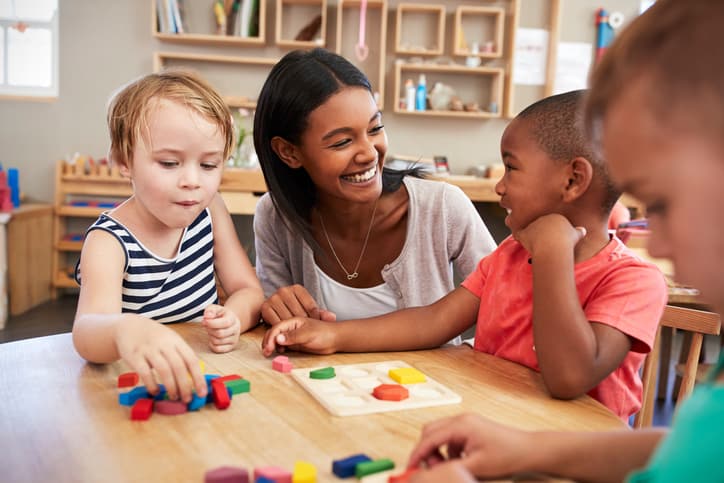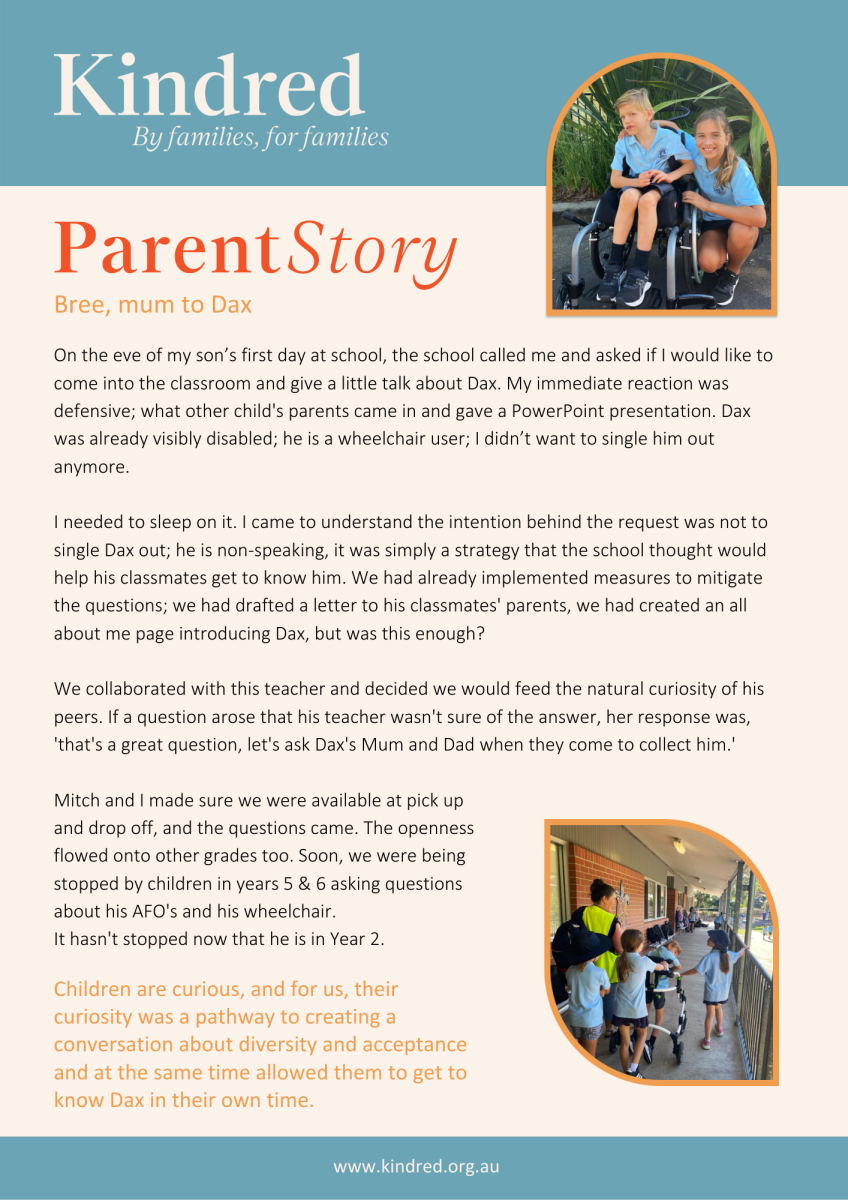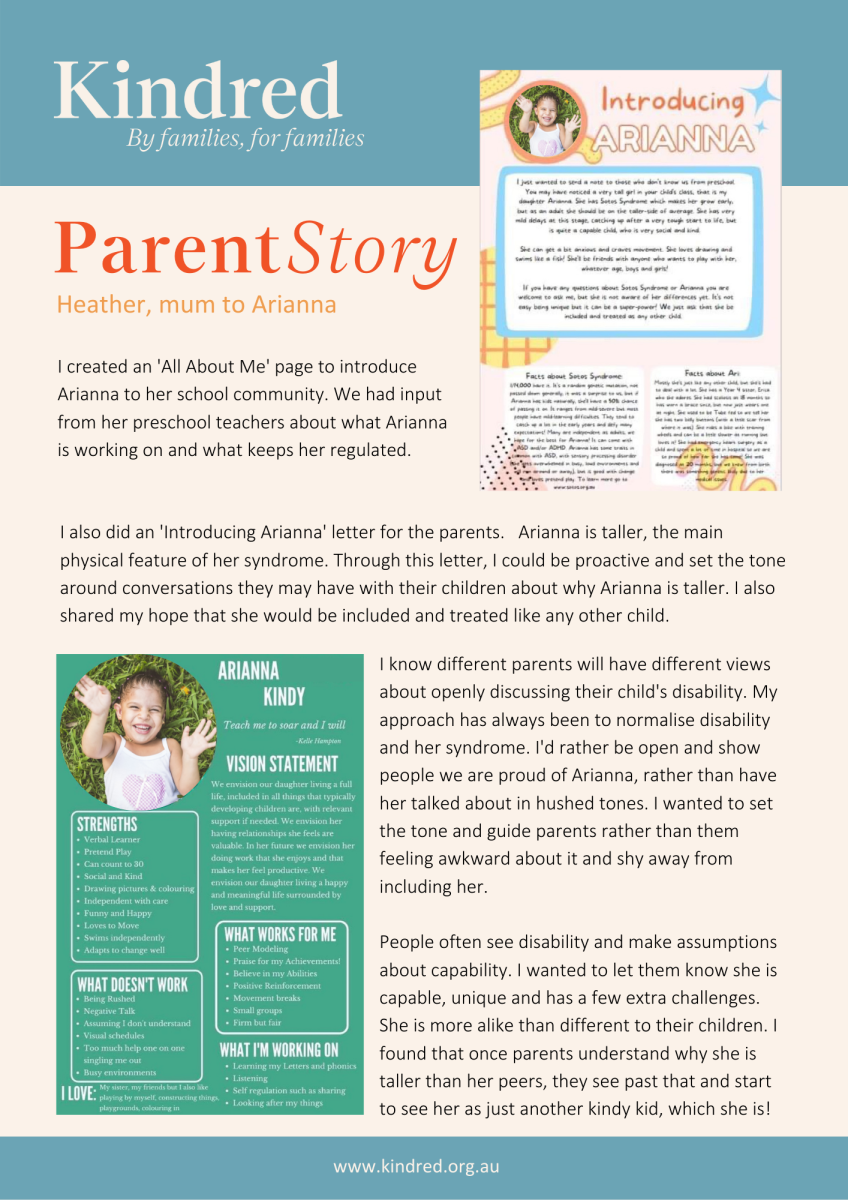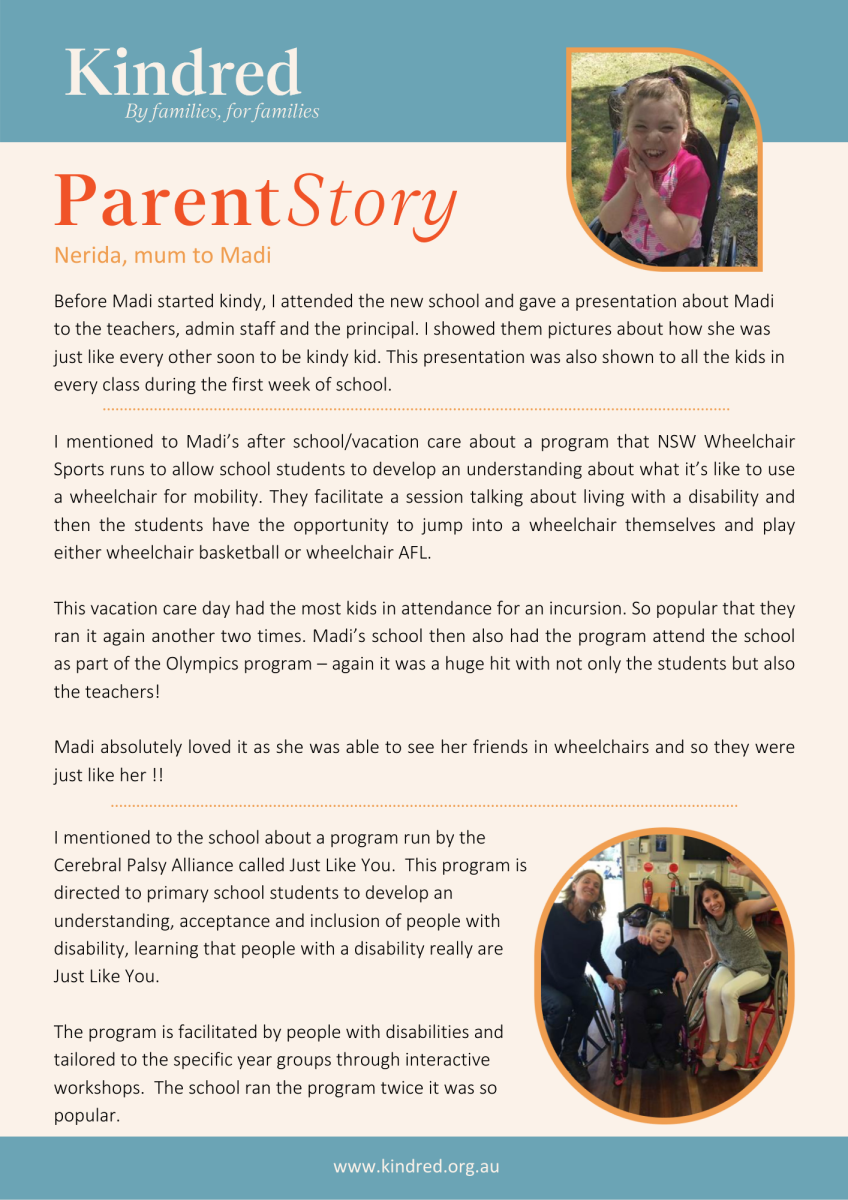Positively educating the school community about your child

The best way to get the school community to positively embrace your child, is to share information about your child and build positive relationships within the school community. This will open communication channels with others, giving the teaching staff and parent community the opportunity to seek knowledge and understanding about your child and their disability. Many parents aKindred community shared strategies that they used to share information about their child, either to the teaching staff or school community, including:
- All About Me – Create an “All About Me” poster to share with your child’s teacher. Parents can participate in an All About Me session with Kindred to guide them to identify your child’s strengths, interests, favourite things, what they are working on, etc. The All About Me workshop information is available here.
- Vision Statement – Write a vision statement that highlights your vision for your child, including how you envisage their schooling, friendships, and future. Kindred provides interactive workshops to empower families to write their vision statement. This statement can be provided to the school so they are clear of the vision your family has for your child. The Vision Statement workshop information is available here.
- Letter – Parents can write a letter to the other families in your child’s class to introduce your family and talk about your child with disability. This can contribute to open communication between parents and other families, as they may feel more comfortable seeking further information after reading the letter about your child.
- Have an “elevator pitch” prepared – Consider what you want to say if a student or family member asks about your child and their disability. This way you are ready to respond in a way that communicates a positive narrative about your child and their disability.
- Short film – Create a short movie with images of your child to be shown to the class and other classes in the school, to help them understand your child’s interests, strengths, and disability. You may also be able find a video on YouTube, just make sure it highlights disability through a positive lens.
- Raise awareness and acceptance – Encourage the school to hold a whole school event to raise awareness and acceptance of your child’s disability and encourage the other students to get involved in the event. Just like schools do for events like Harmony Day, they could celebrate a day that raises awareness of disability, for example Jeans for Genes Day, International Day of Persons with Disability.
- Provide story books about disability and inclusion – There are many books available around different disabilities and inclusion. Parents can find a book specific to their child with disability, and encourage the classroom teacher to read the book, to educate your child’s peers about their disability. A variety of books about inclusion and disability can be found here.
- Feed their natural curiosity – children are inquisitive. Lean into this curiosity and answer any questions that they have about your child. This allows you to control the narrative and help to shape a positive view of your child, their disability and their future views of disability.


